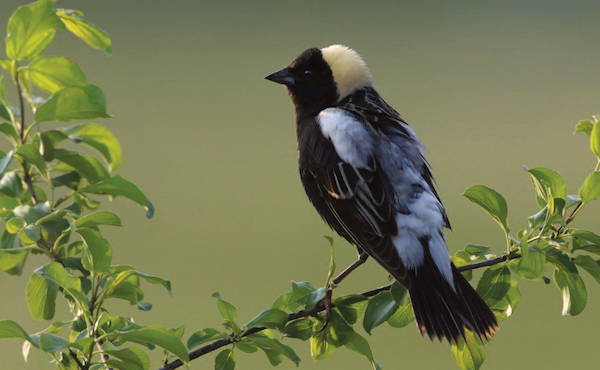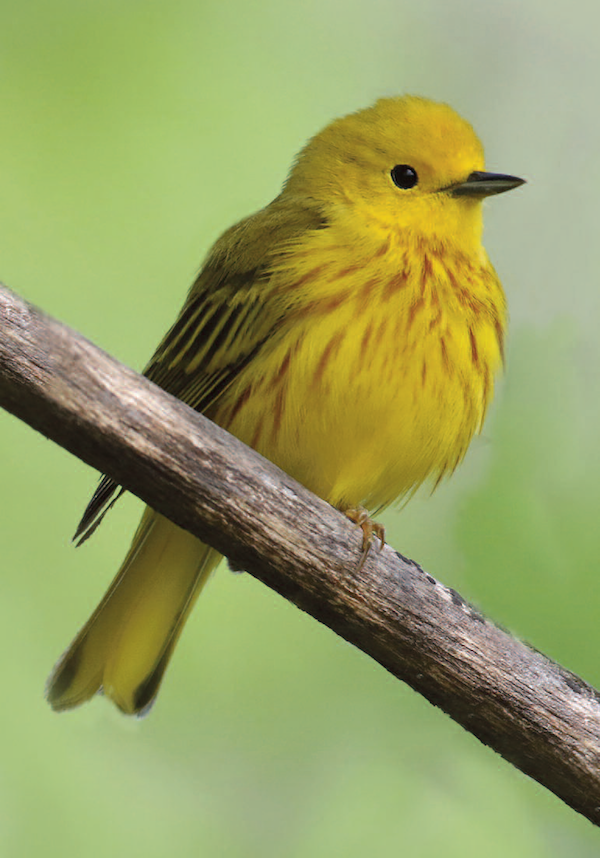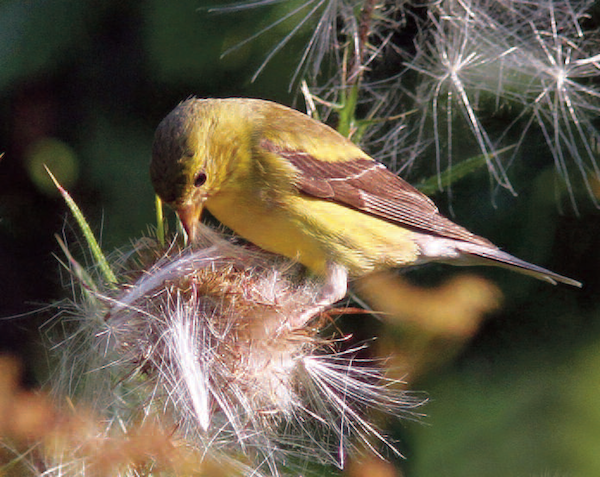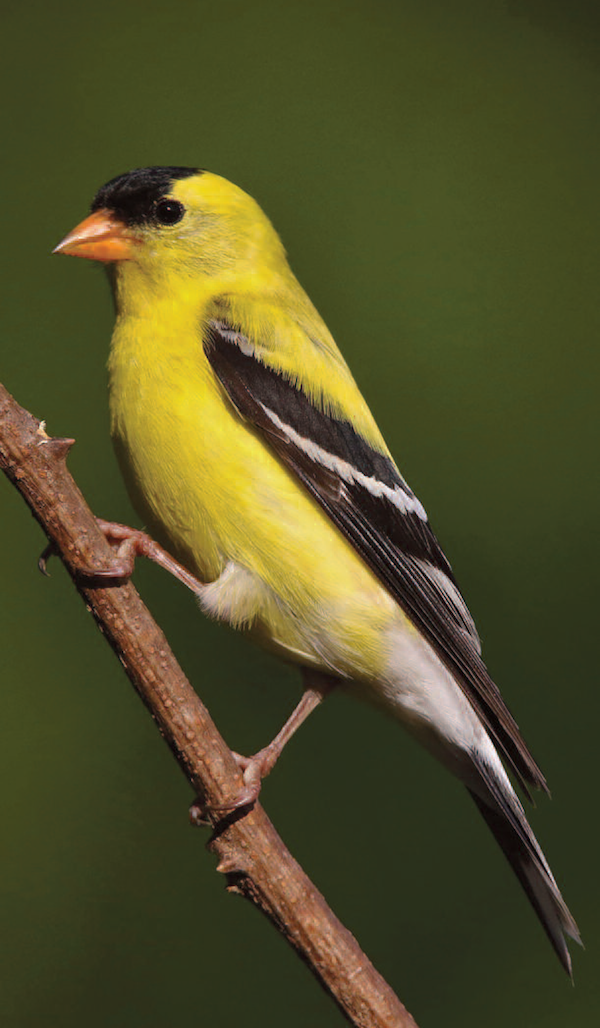
Their songs are essential to breeding
text and photos by Brian Morin
Robins, Song Sparrows, countless varieties of warblers and a host of other familiar species have one thing in common — they are all songbirds. Many of these species are among our favourite birds.What would our lives be like without the serenade of the male Cardinal whistling from atop a nearby tree, or the familiar call notes of the Red-winged Blackbird ringing from the marsh. Well, those calls have become more subdued now and in some cases have disappeared completely until spring arrives next year.
Song is essential in the lives of these birds during the breeding season. Males lure potential mates once they have selected a suitable territory for both nesting and food.The same songs identify a bird’s claim on their section of habitat to intruders, lessening the need to fly from place to place whenever an outsider appears. Song consumes far less energy than flight and aggression.
Once the nestlings have flown and assuming no second nesting takes place, birds go quiet. In fact, by late July/early August when most songbirds have finished up their parental duties, at mid-day you will be hard pressed to hear any song at all. The silence is deafening.
Robins are a perennial favourite for some but not for all, if sleep deprivation is an issue. This early riser can call at any time but is usually going strong at least an hour before sunrise, sometimes two.
Robins often have a second or third brood. Sometimes adults will still be feeding their f ledged, speckled young while another brood is on the way.That’s when you say,“OK kids, you’re on your own.” These are hardy birds so you’ll be seeing them for months yet. There is usually a large movement south in November but if winter starts out mild, many will linger well into December, showing up on Christmas bird counts. You may see a few over winter.
Such is not the case with the Bobolink. Its bubbly call, heard in pastures and hayfields earlier in the summer has been replaced with a single note uttered periodically. The male’s striking black and white summer coat with creamy feathers on the back of the head has changed in preparation for an epic journey,travelling as far south as Argentina. At up to 20,000 km, it is one of the longest migrations of any songbird. Now both males and females look like large sparrows and are getting hard to find.

The Yellow Warbler, a bird that frequents a variety of habitats is the most abundant local breeder in this family. Its song, sounding like ‘sweet-sweet-sweet shredded wheat’ is familiar to many but at this time of year, like the majority of songbirds, it will give only a single call note. This is one of the first warblers to depart. In fact, many Yellows have already gone. One day you look around and they have quietly slipped away.
For some warblers there will be a complete transformation where they appear to be an entirely different species. In the post breeding period, birds molt, a few feathers at a time, until they have donned a new outfit that will carry them through the winter. In the case of warblers, many males acquire more subdued plumage with pale yellows, browns and greens being predominant.They often look more like females.Then there are the juveniles that have some characteristics of the species but are confusing in their own right.When you put all of this together and increase the number of warbler species passing through the region right now to over 20, birders will have their work cut out for them. Saying they are confusing is an understatement.

To the surprise of many, not all songbirds are in the process of packing up and leaving town.The American Goldfinch is a notoriously late nester. In fact, some females may still be sitting on eggs.These birds like to use the downy parts of seeds from thistle, milkweed and other plants to line their nests and that occurs in mid to late summer.They will also feed the seeds to their young — they have a strictly vegetarian diet. It is no wonder they love Nyjer seed. Some people refer to Goldfinches as wild canaries because of the bright breeding plumage of the males and because of their musical song, a rambling series of twitters and warbles uttered by both males and females.They will sing throughout the year, which is a treat for anyone that enjoys bird song.

While we have entered a quieter time, we can still enjoy the sight of some of our favourite local residents, the Cardinals, chickadees and jays that entertain us throughout the winter while we await the arrival of another exciting breeding season. ■
Brian Morin is the publisher of Ontario Birding News, a newsletter for birding enthusiasts. He has been actively involved in watching and photographing birds in Ontario for more than 40 years.






